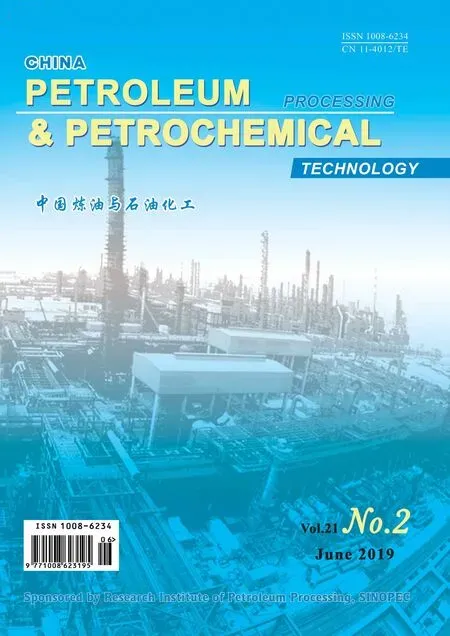Progress in Research on Manufacture of Aromatics via Hydrogenation of CO2 at Dalian Institute of Chemical Physics
2019-01-12
Over the years the team headed by Li Can at the CAS Dalian Institute of Chemical Physics (DICP) has been engaging in study on conversion of carbon dioxide.Hydrogen as a clean energy can be used to convert CO2to liquid fuel and chemicals, which is an important strategy to achieve reduction of CO2emissions and sustainable utilization of carbon source.
The team headed by Li Can on the basis of research on manufacture of methanol via the hydrogenation of CO2in the solid solution of ZnZrO and the production of low-carbon olefins via hydrogenation of CO2over the connected-in-series ZnZrO/SAPO zeolite system has further established a connected-in-series ZnZrO/ZSM-5 catalyst system. This catalyst system can achieve highly selective hydrogenation of CO2to aromatics,with the aromatics selectivity in hydrocarbons reaching 73%-78% at a CO2single-pass conversion of 14%. The study has revealed that the key for hydrogenation of CO2to aromatics is the effective synergism between the connected in series catalysts. The infrared spectroscopy,the chemical capture technique and other experiments have shown that CO2and H2over the oxidized products of ZnZrO solid solution can form the CHxO intermediate species, which can migrate from the surface of ZnZrO to the zeolite channels to produce aromatics eventually.The mechanism for synergism between the connected in series catalysts and the surface migration of the CHxO intermediate species can implement the thermodynamic and kinetic coupling of reactions for direct hydrogenation of CO2to aromatics.
Research has also demonstrated that water formed during hydrogenation of CO2has its promotor effect on the aromatization of ole fins. The existence of H2O and CO2in the reaction system can provide a weakly oxidative atmosphere to suppress the formation of polynuclear aromatics on the catalyst and extend the cycle length of catalyst that shows no signs of deactivation after 100 hours of operation.
杂志排行
中国炼油与石油化工的其它文章
- Optimization of Dividing Wall Column with Heat Transfer Process Across the Wall for Feed Properties Variation
- Numerical Simulation of Optimization of Mixing Tank for Residue Upgrading Reactor
- Biodegradability and Tribological Properties of Mineral Base Oil Enhanced by Caprylic Methyl Diethanolamine Phosphate Ester
- Enhanced Anti-Wear Property of Low Viscosity Engine Oil for Sequence IVB Engine Test Meeting the GF-6 Specification
- Study on Flue Gas Desulfurization Process with Selective SO2 Removal by N-formylmorpholine
- Research and Application of Image Recognition Technology in Microscopy Diagnosis of Catalytic Cracking Catalysts
